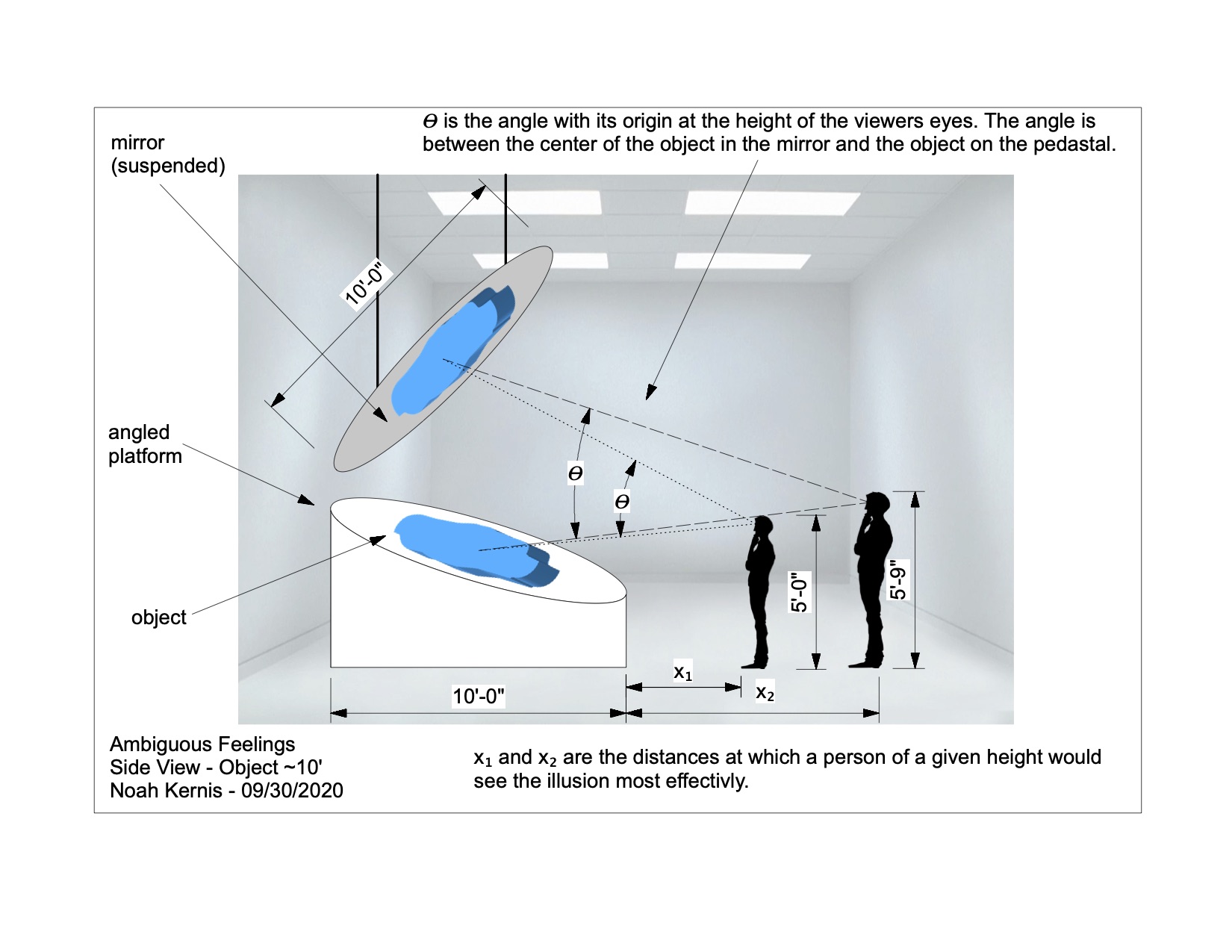Ambiguous Feelings - Scale and Context
Scale and Context⌗
My plan is to make the ambiguous object I am designing, large. The current rendering has the object sitting on a circular pedestal that has a diameter of 10 feet (radius of 5 feet).
The setup would require a large space that is uniformly lit. The lighting may need to be more specific in the future, but I have not experimented enough yet to know how light intensity and angles effect the illusion.
The object can be viewed from any angle or distance that the room allows. However, there is an optimal distance that the illusion can be viewed from. This distance is dependent on the viewers height (specifically the height of their eyes). There isn’t a “correct” way to view the piece, but there is a position from which the illusions appearance is most effective.
Rendering⌗

Next Steps⌗
The angle, 𝛳, does have a fixed value. I am still experimenting with creating the objects, and part of this is the viewing angle. I need to test objects of different sizes and ones designed for different viewing angles to see which I like best.
What this means is that the scale of the object is still up in the air. The relationships expressed in the rendering will still be true, but the actual size (and maybe number of objects in the space) may still change.